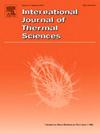快堆大区域热分层机理分析及智能加速预测方案研究
IF 5
2区 工程技术
Q1 ENGINEERING, MECHANICAL
International Journal of Thermal Sciences
Pub Date : 2025-05-22
DOI:10.1016/j.ijthermalsci.2025.110004
引用次数: 0
摘要
热分层现象影响堆芯的剩余散热能力。为探索热分层的潜在机制和建立有效的预测方法,提出了一种基于熵产分析的热分层快速智能预测模型。该模型首先从不同角度分析了熵产率对瞬态热分层的影响,并定义了事故瞬态时上静压室热分层自保存的无因次数,以评价热分层状态的稳定性。将卷积神经网络(cnn)与长短期记忆网络(LSTMs)相结合,实现了不同时刻的瞬态热分层预测。结果表明,一维轴向温差换热熵产率与热分层之间存在直接关系,Ssp数有效反映了不同时间流场对热分层的影响程度。此外,熵产率数据有助于CNN聚焦热分层区域,有效提取热分层特征,降低计算复杂度。与三维计算流体力学(CFD)方法相比,该CNN-LSTM模型可以准确预测不同时刻热分层的位置、轮廓和强度,同时减少了计算资源和时间消耗。本文章由计算机程序翻译,如有差异,请以英文原文为准。
Mechanism analysis of thermal stratification in large domain of fast reactor and research on intelligent accelerated prediction scheme
The phenomenon of thermal stratification affects the core residual heat dissipation capability. To explore its underlying mechanisms and develop efficient prediction methods, this paper proposes a rapid intelligent prediction model for thermal stratification based on entropy production analysis. The model first analyzes the impact of entropy production rates from different angles on transient thermal stratification and defines a dimensionless number for the self-preservation of thermal stratification (Ssp) in the upper plenum during accident transients to evaluate the stability of the thermal stratification state. The prediction of transient thermal stratification at different moments is achieved by combining Convolutional Neural Networks (CNNs) with Long Short-Term Memory Networks (LSTMs). The results indicate a direct relationship between the one-dimensional axial temperature difference heat transfer entropy production rate and thermal stratification, with the Ssp number effectively reflecting the intensity of the flow field's influence on thermal stratification at different times. Additionally, the entropy production rate data helps the CNN focus on the thermal stratification regions, effectively extracting thermal stratification features and reducing computational complexity. Compared to three-dimensional Computational Fluid Dynamics (CFD) methods, this CNN-LSTM model can accurately predict the location, contour, and intensity of thermal stratification at different moments while simultaneously reducing computational resources and time consumption.
求助全文
通过发布文献求助,成功后即可免费获取论文全文。
去求助
来源期刊

International Journal of Thermal Sciences
工程技术-工程:机械
CiteScore
8.10
自引率
11.10%
发文量
531
审稿时长
55 days
期刊介绍:
The International Journal of Thermal Sciences is a journal devoted to the publication of fundamental studies on the physics of transfer processes in general, with an emphasis on thermal aspects and also applied research on various processes, energy systems and the environment. Articles are published in English and French, and are subject to peer review.
The fundamental subjects considered within the scope of the journal are:
* Heat and relevant mass transfer at all scales (nano, micro and macro) and in all types of material (heterogeneous, composites, biological,...) and fluid flow
* Forced, natural or mixed convection in reactive or non-reactive media
* Single or multi–phase fluid flow with or without phase change
* Near–and far–field radiative heat transfer
* Combined modes of heat transfer in complex systems (for example, plasmas, biological, geological,...)
* Multiscale modelling
The applied research topics include:
* Heat exchangers, heat pipes, cooling processes
* Transport phenomena taking place in industrial processes (chemical, food and agricultural, metallurgical, space and aeronautical, automobile industries)
* Nano–and micro–technology for energy, space, biosystems and devices
* Heat transport analysis in advanced systems
* Impact of energy–related processes on environment, and emerging energy systems
The study of thermophysical properties of materials and fluids, thermal measurement techniques, inverse methods, and the developments of experimental methods are within the scope of the International Journal of Thermal Sciences which also covers the modelling, and numerical methods applied to thermal transfer.
 求助内容:
求助内容: 应助结果提醒方式:
应助结果提醒方式:


